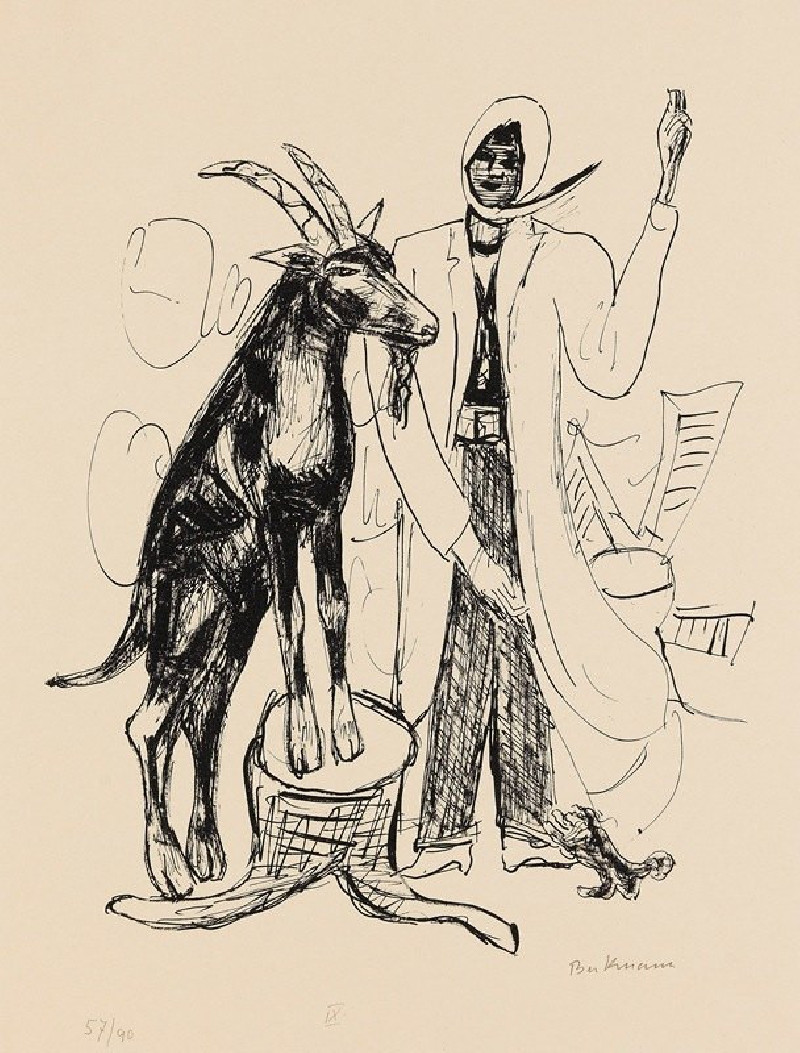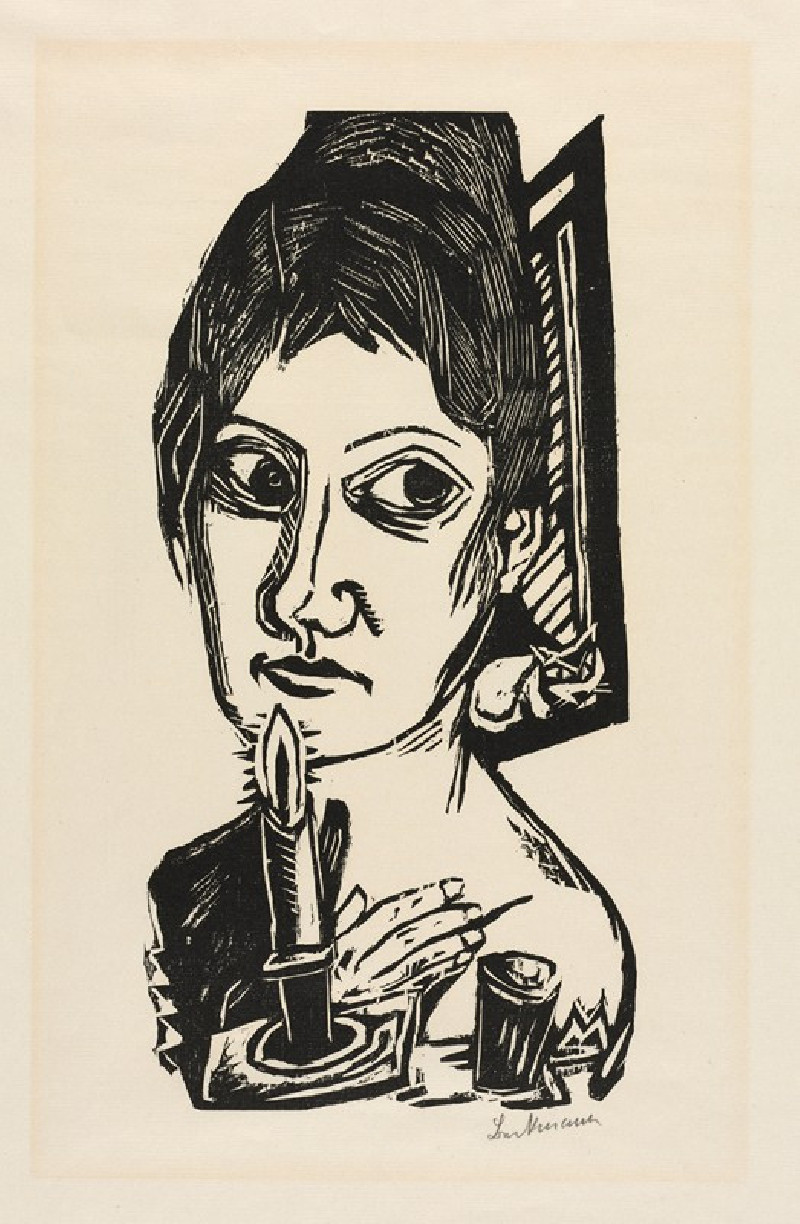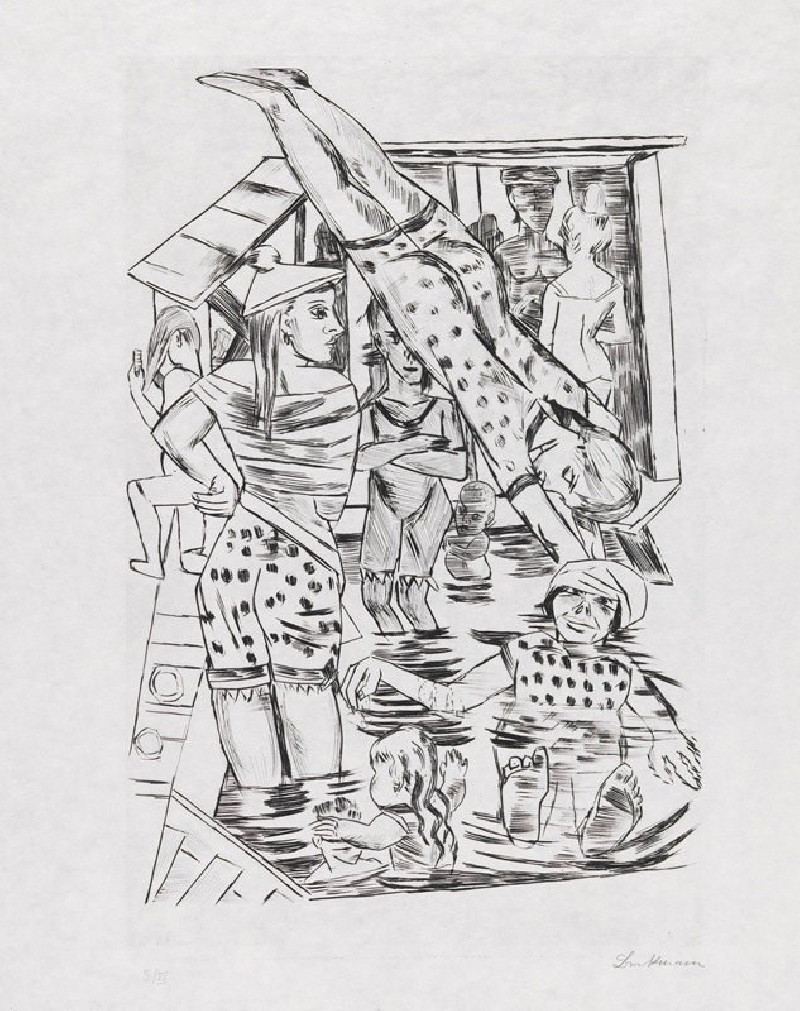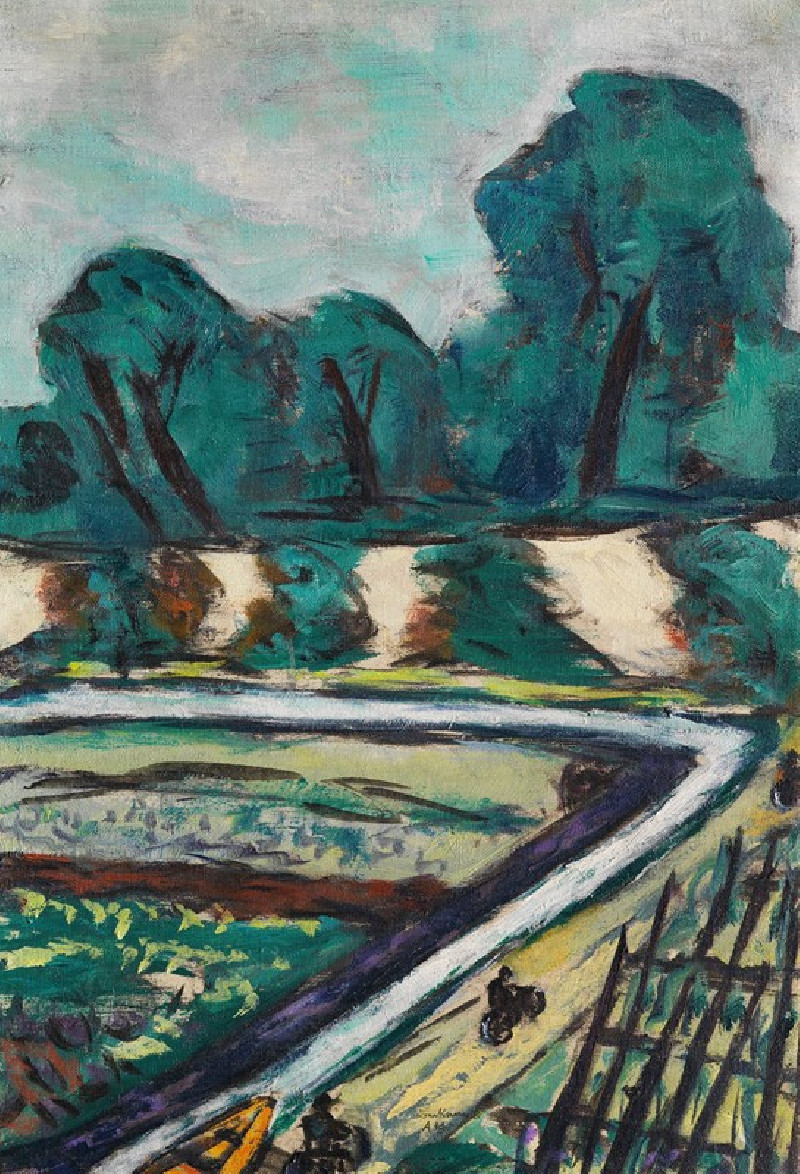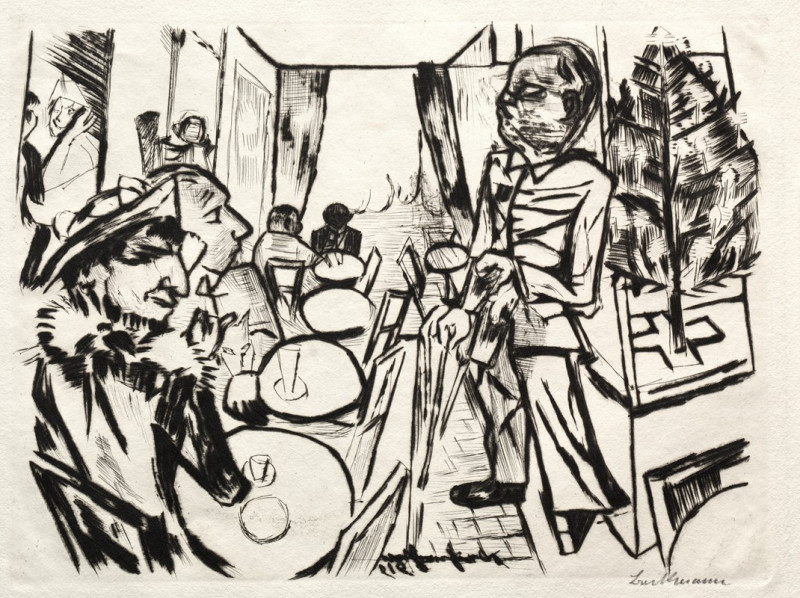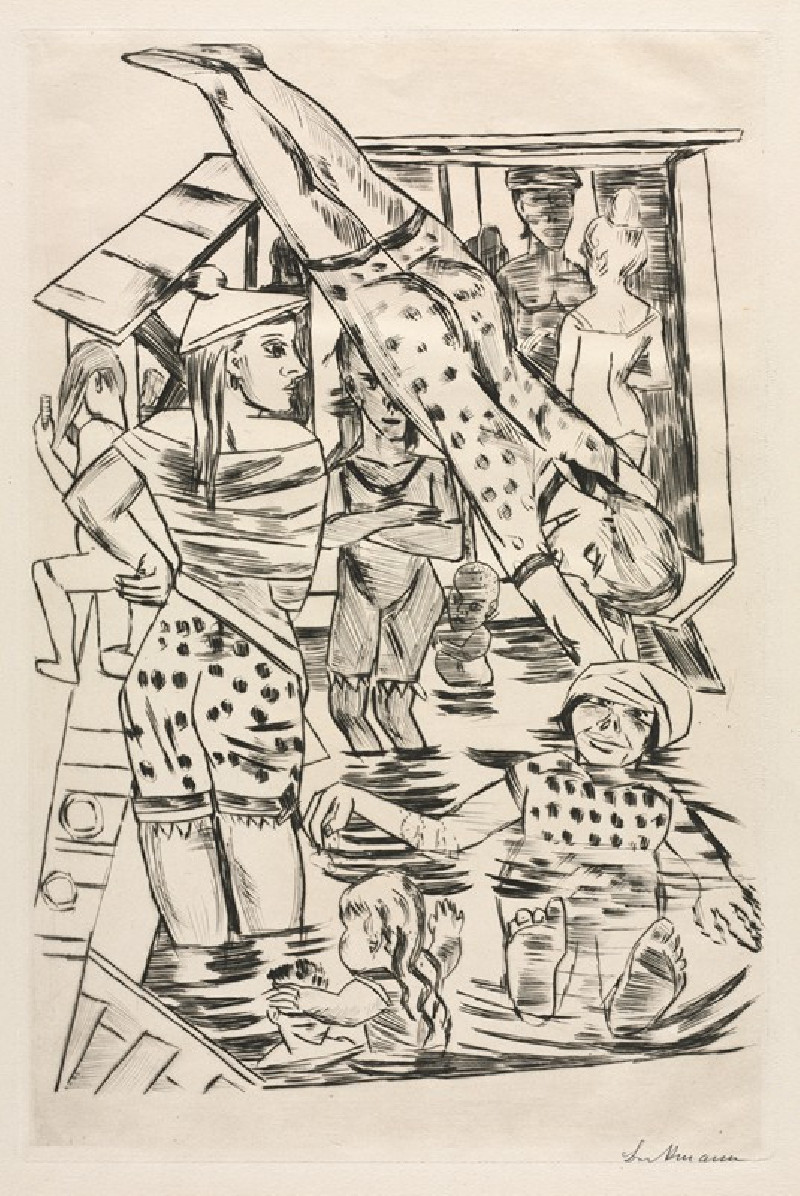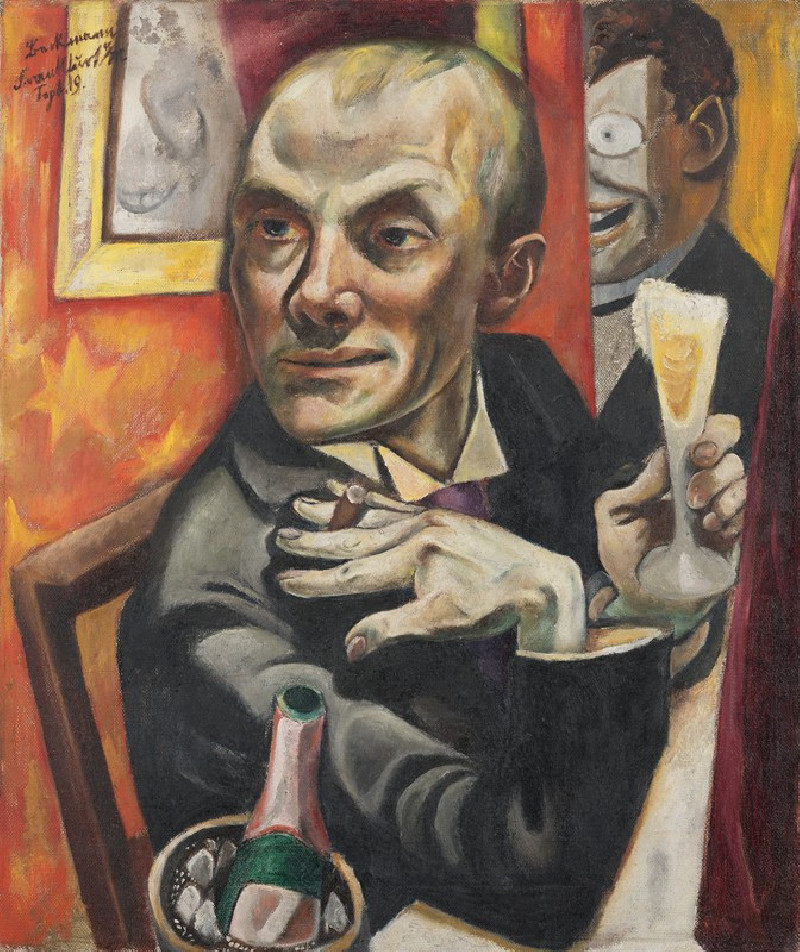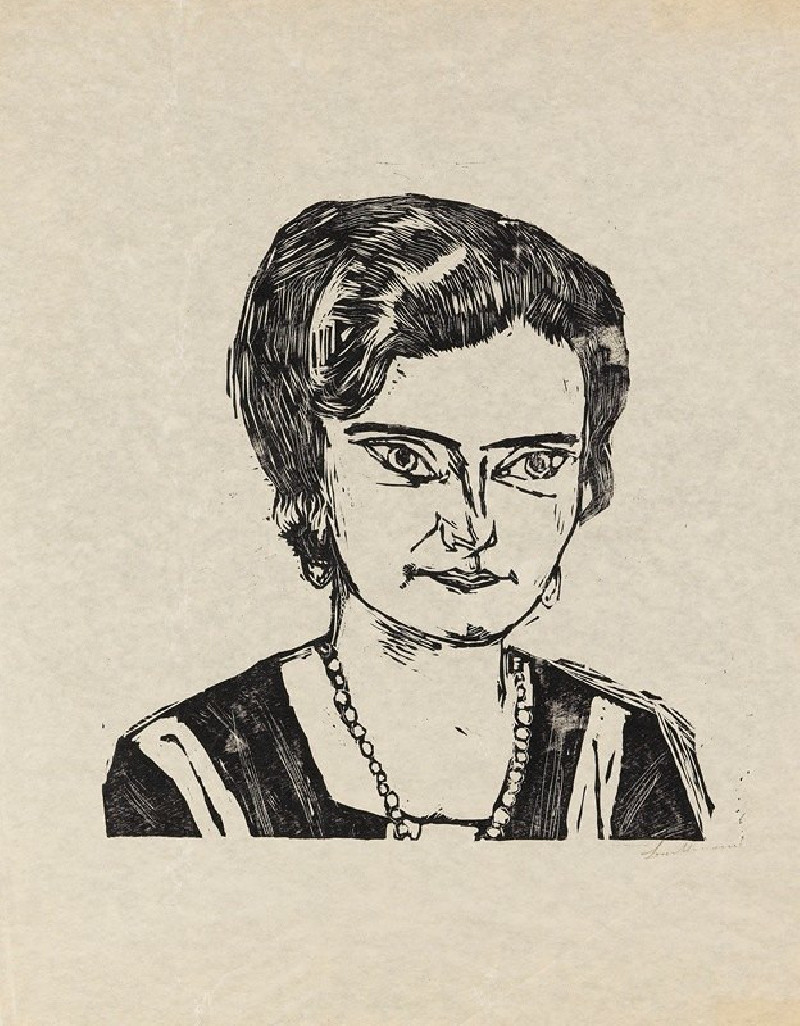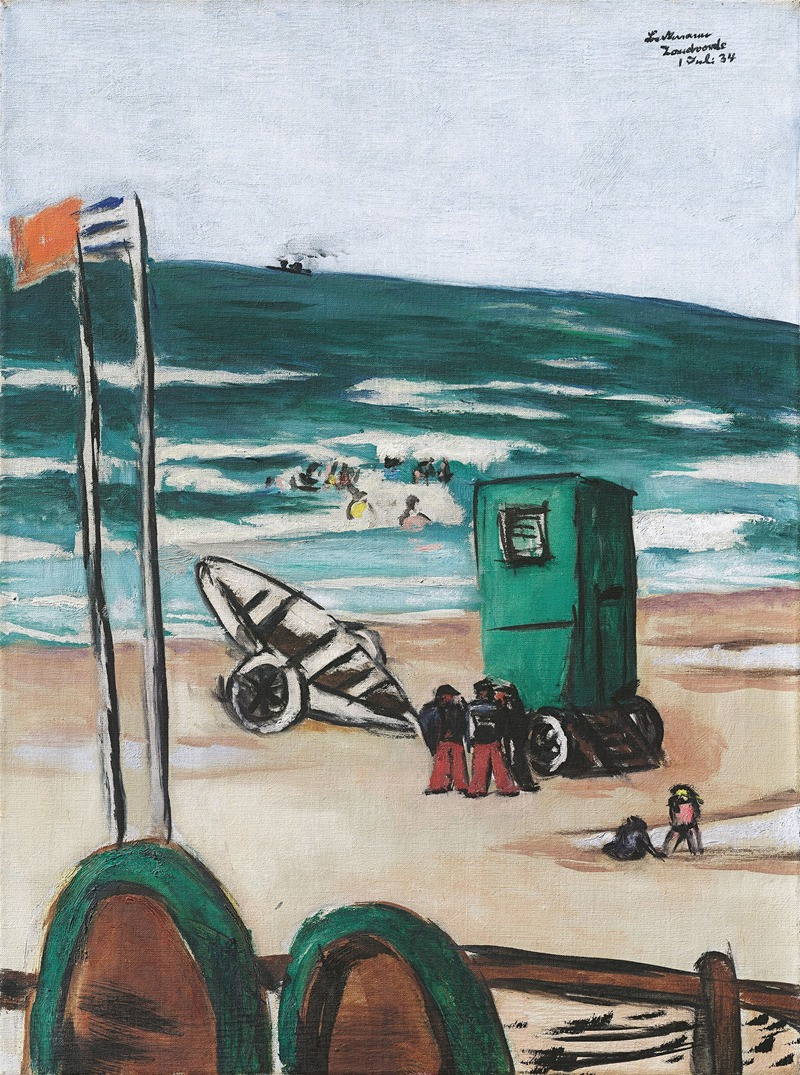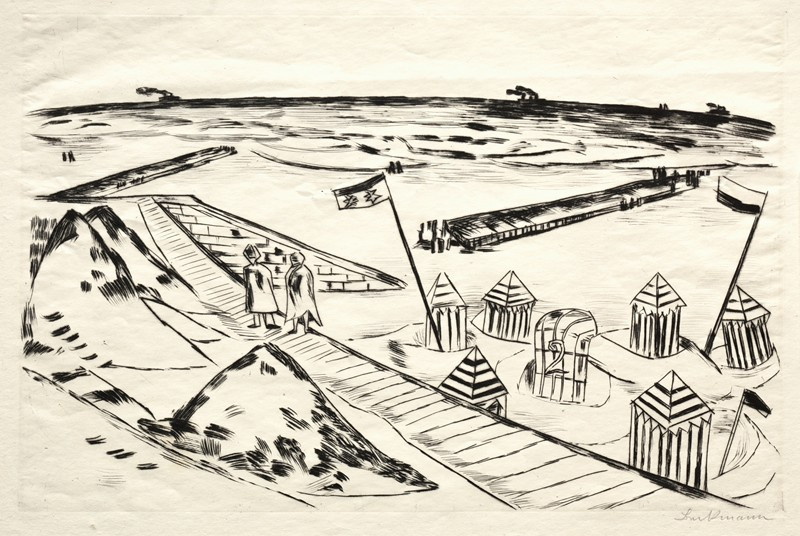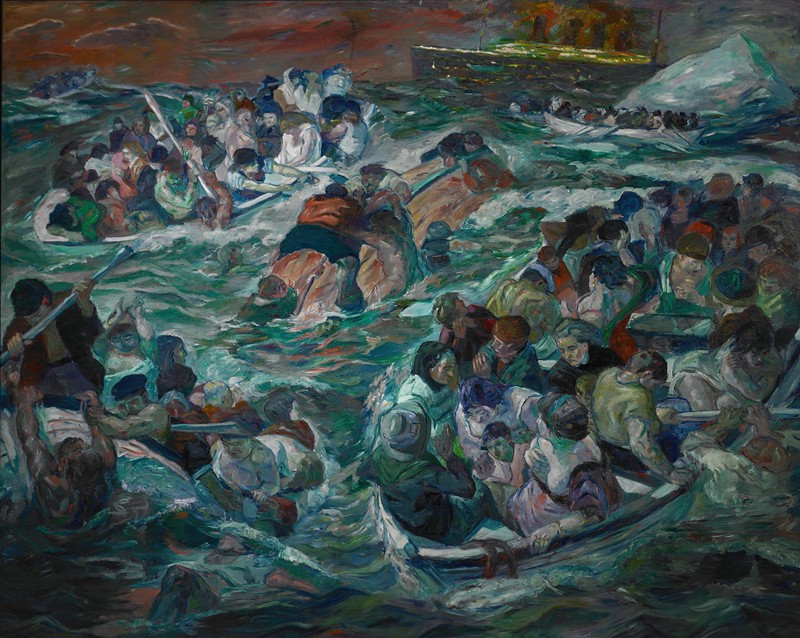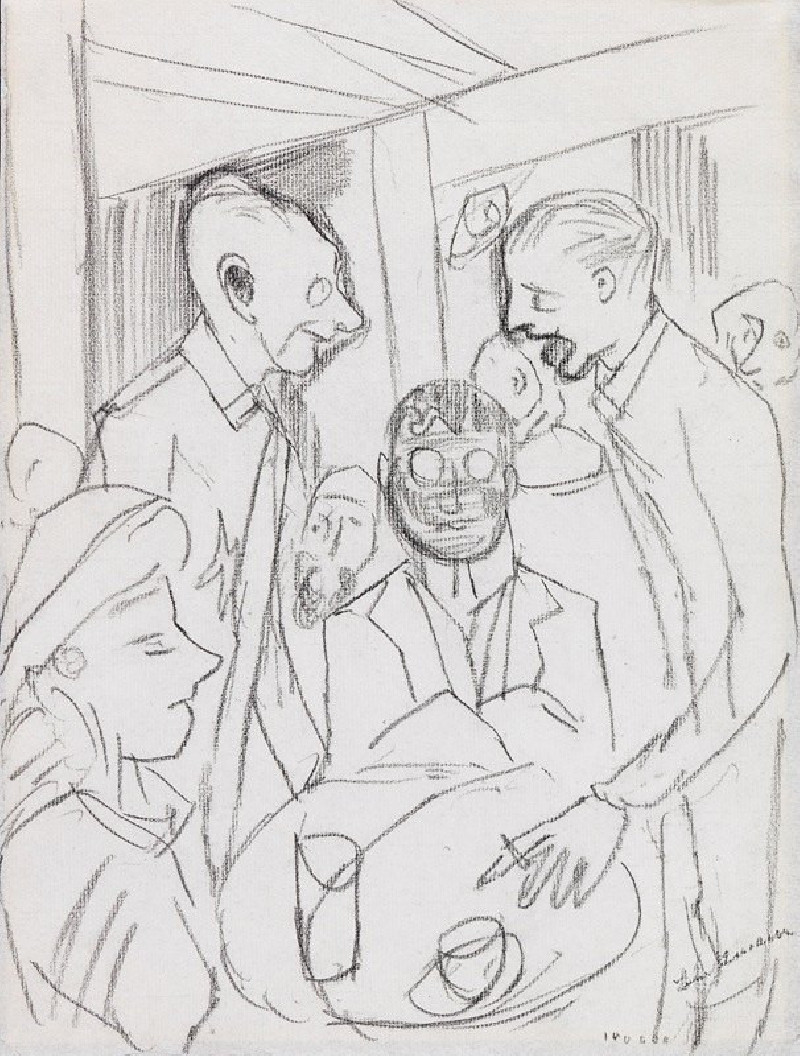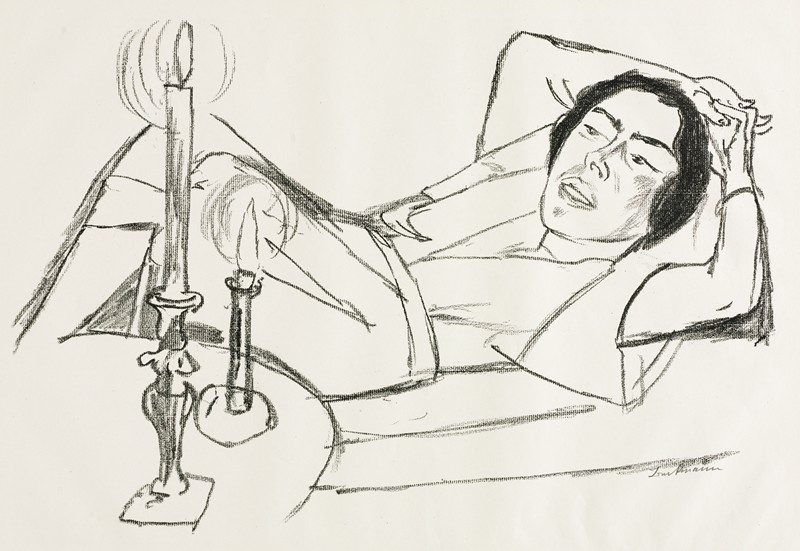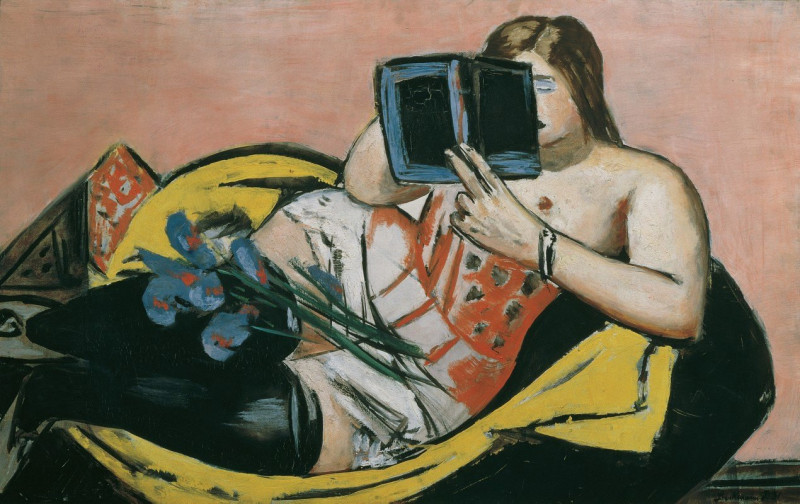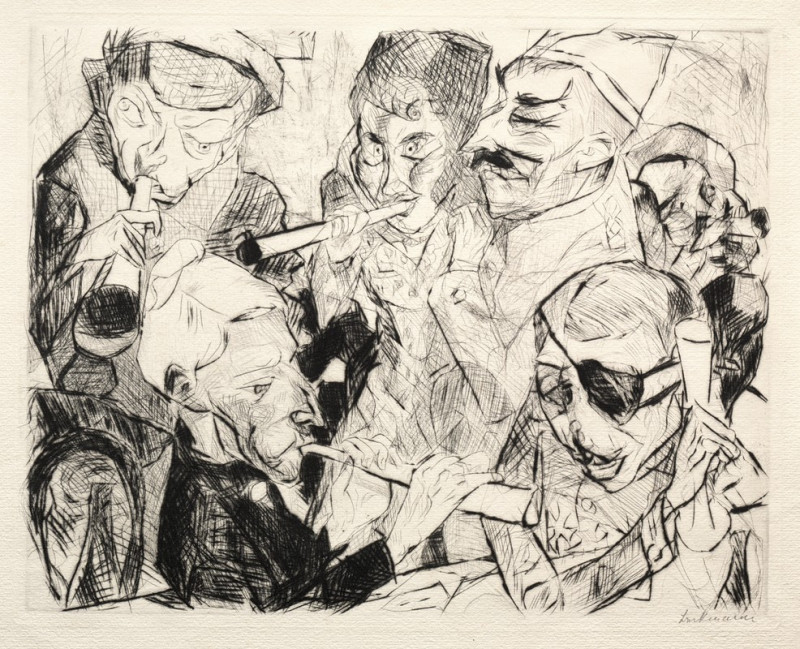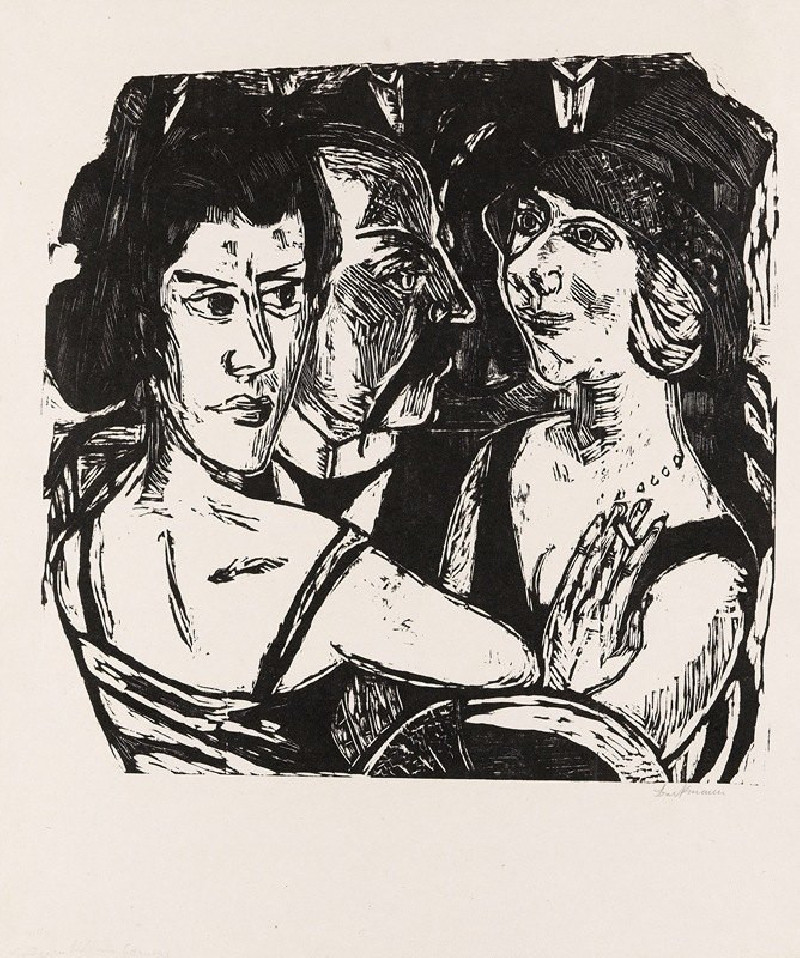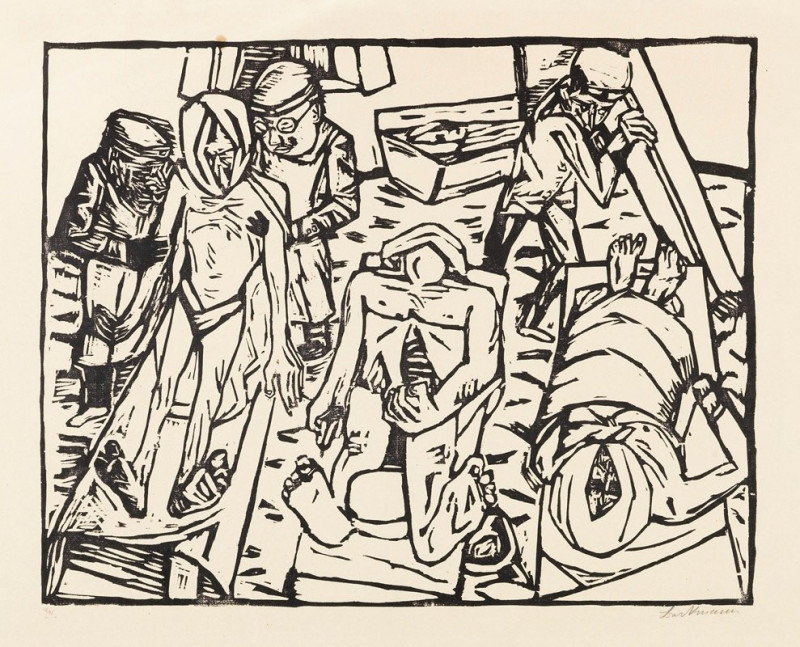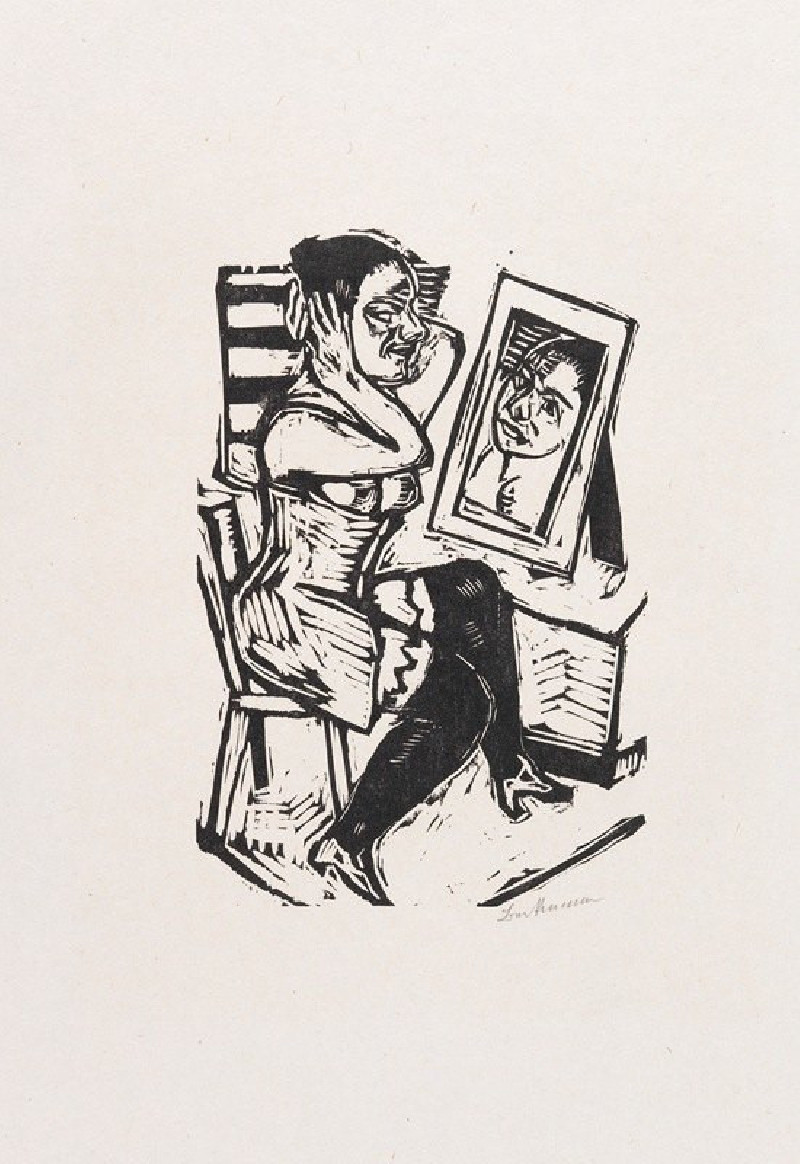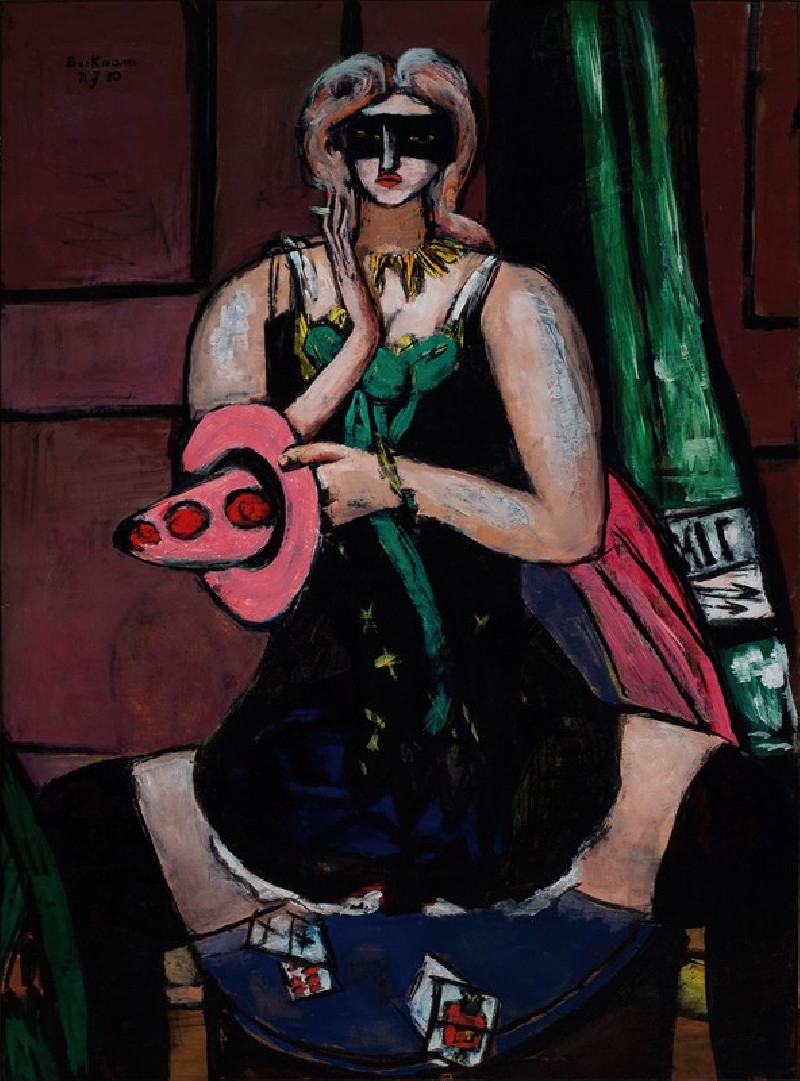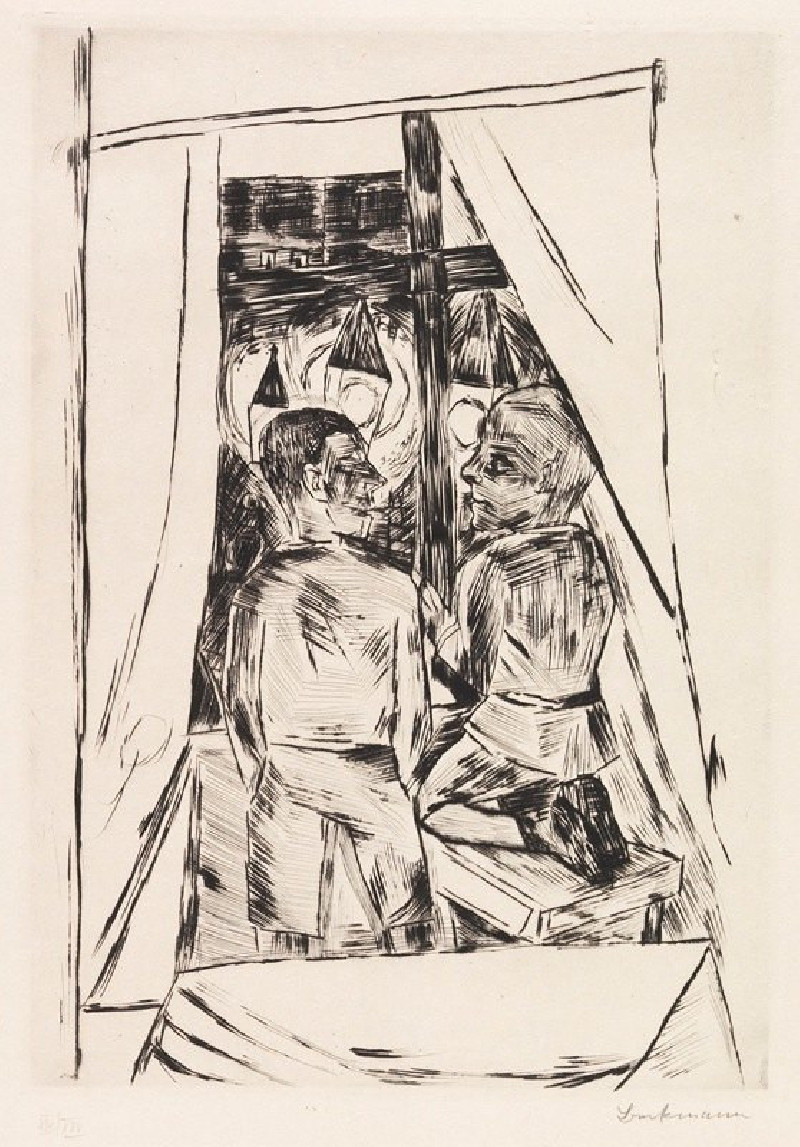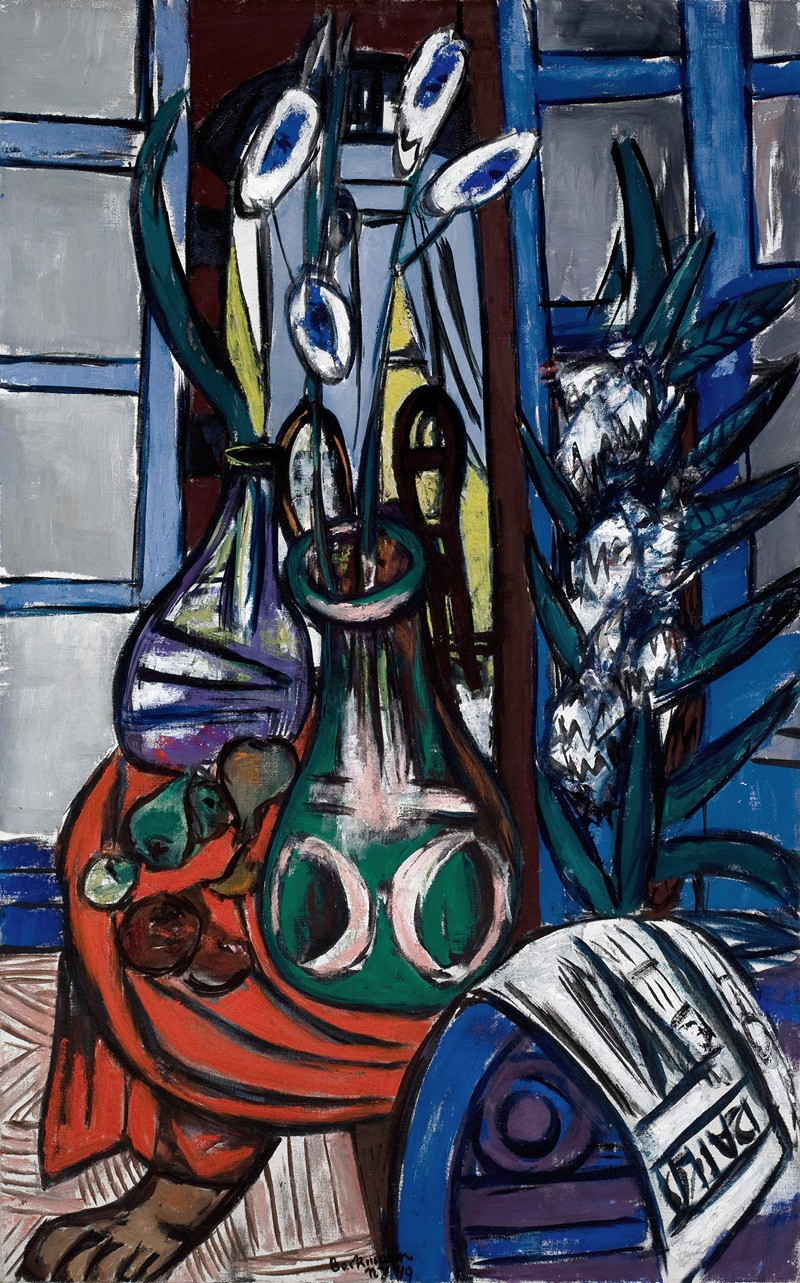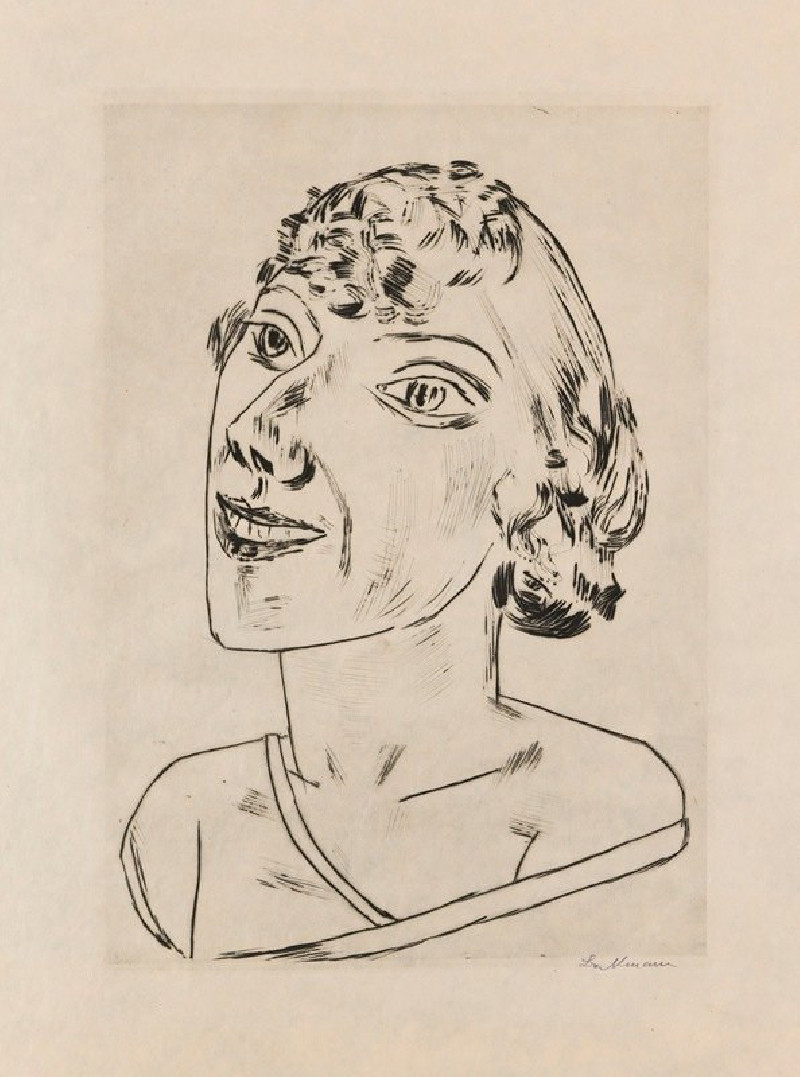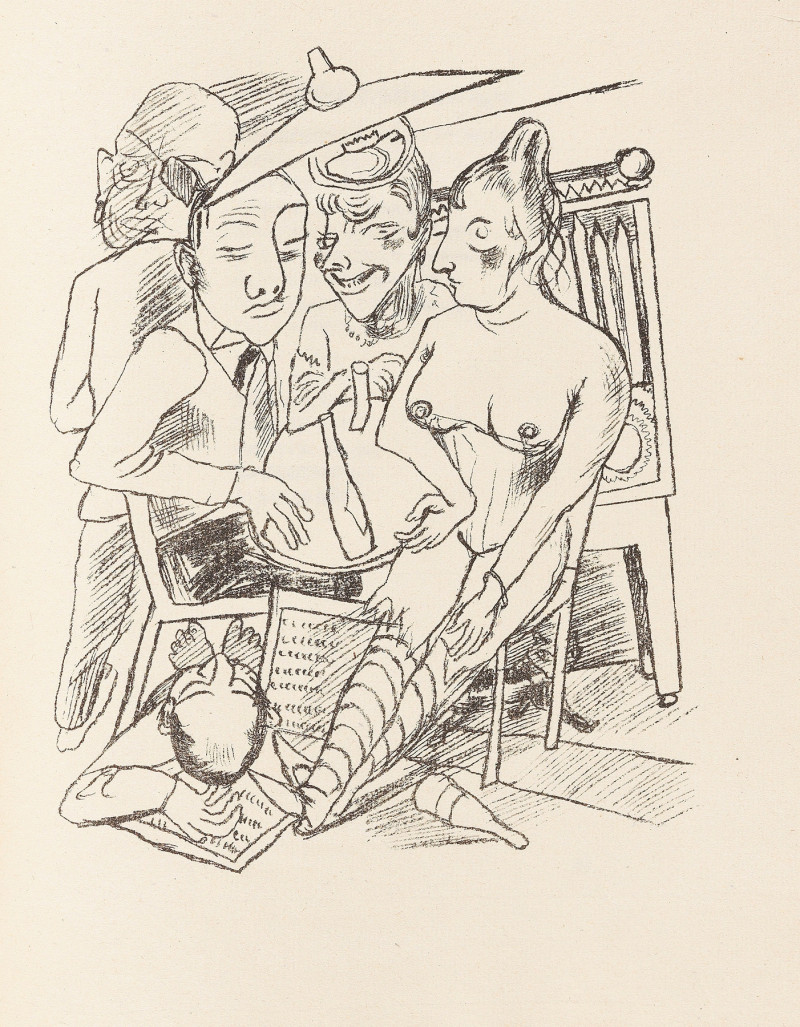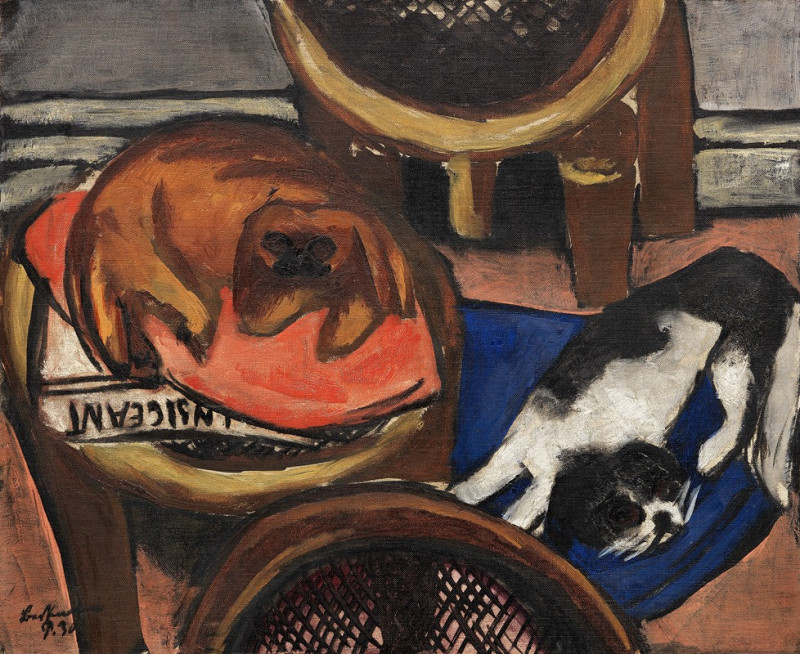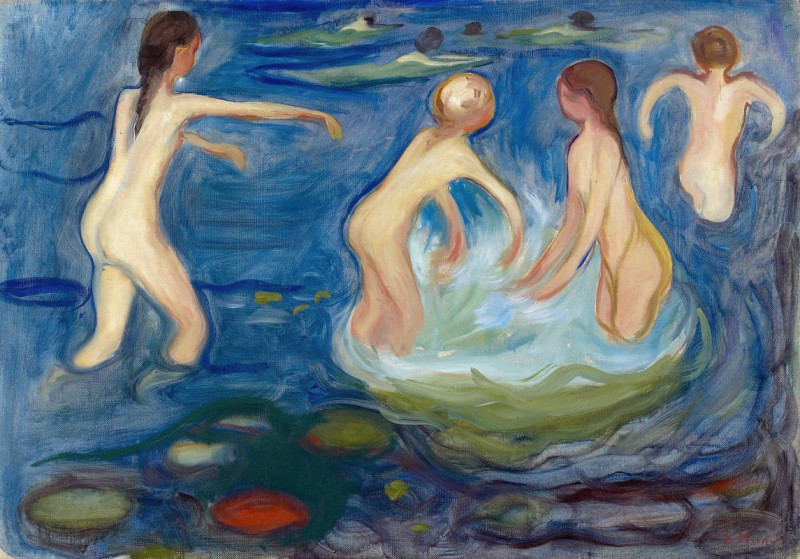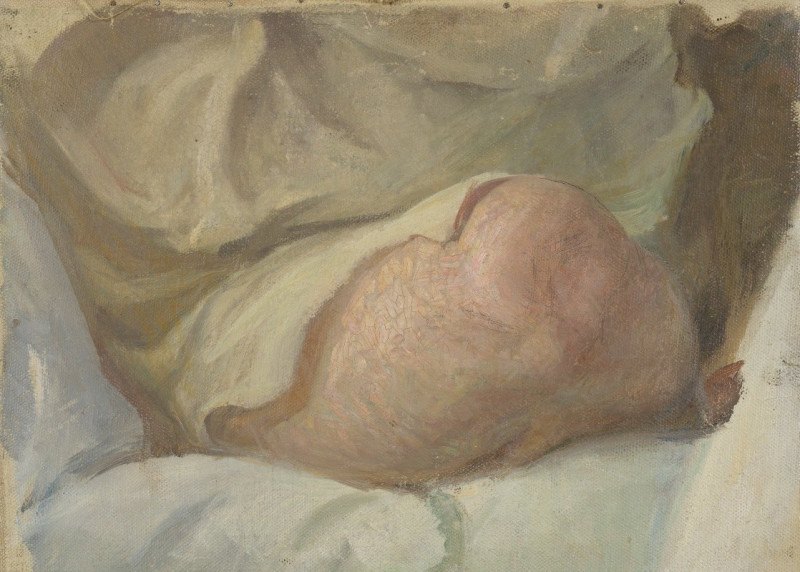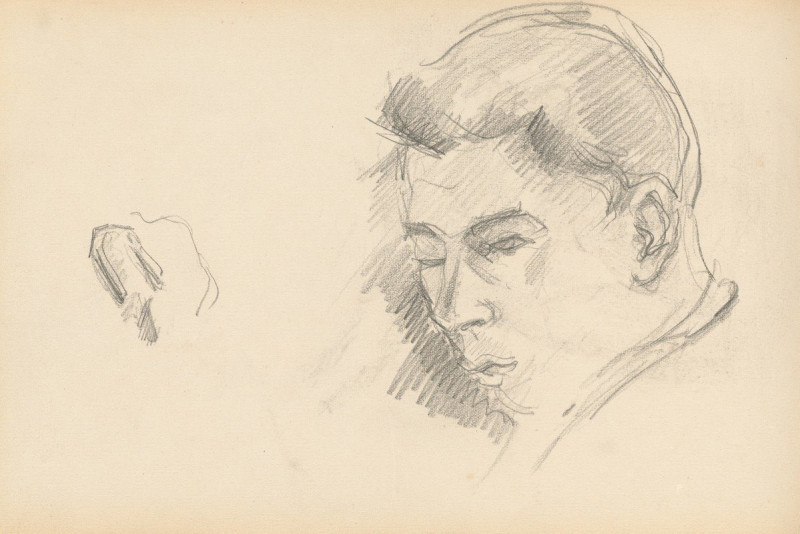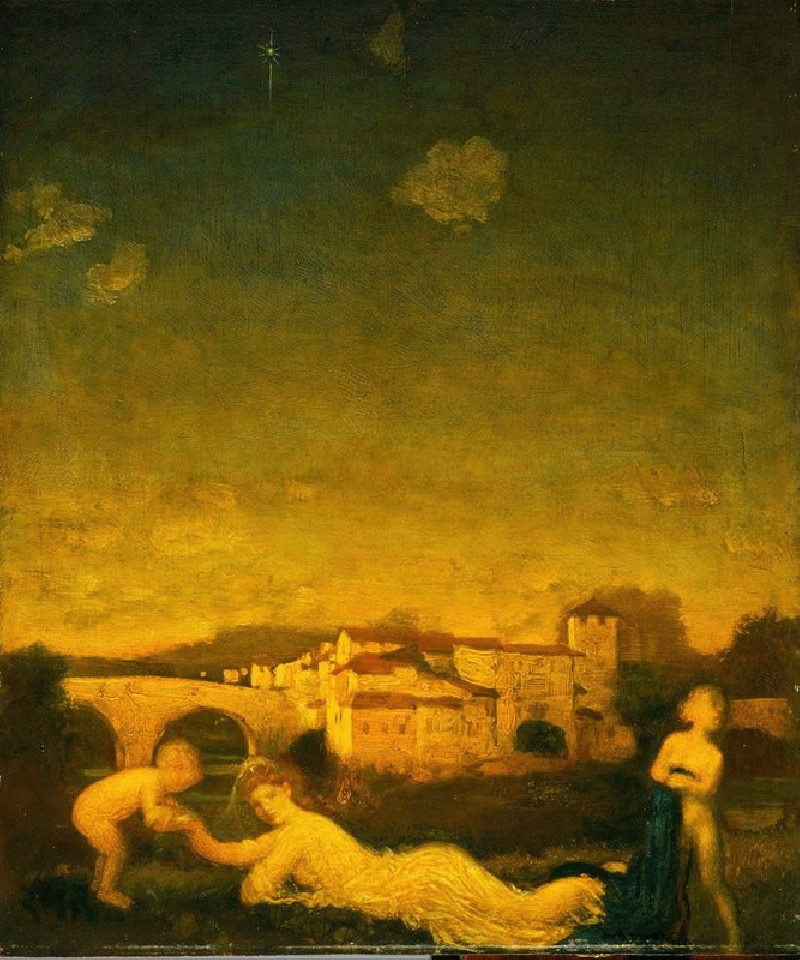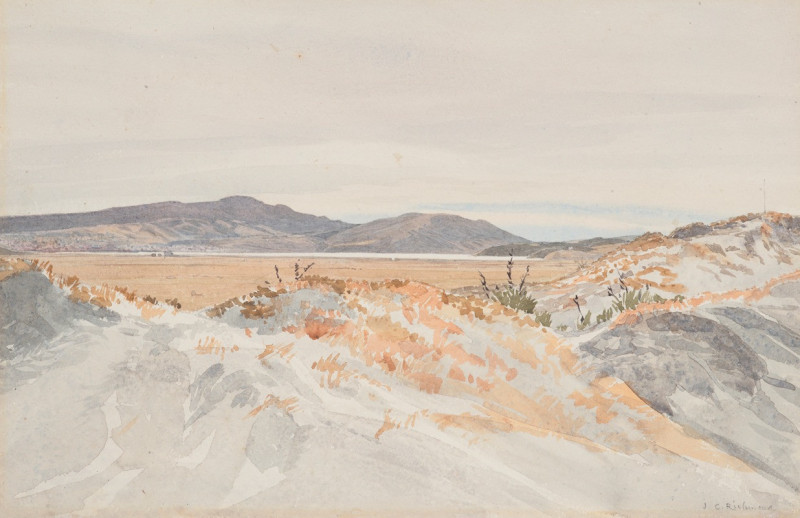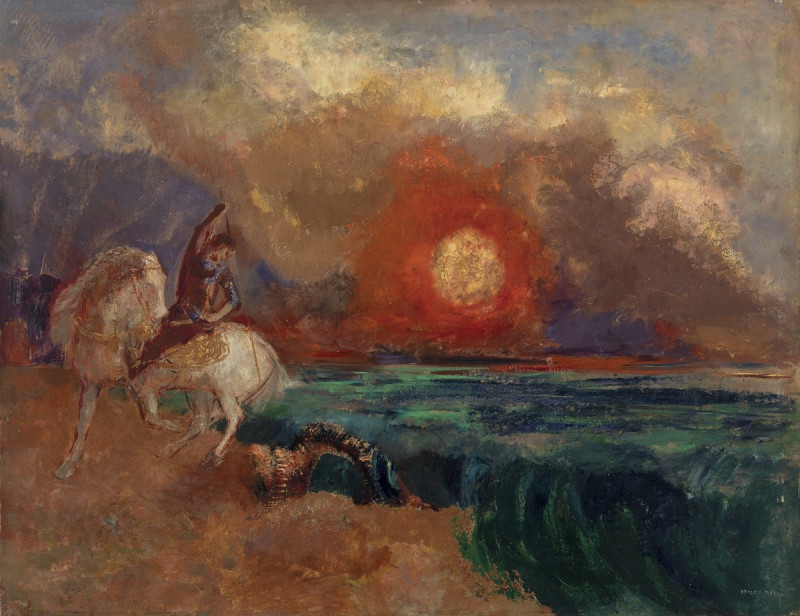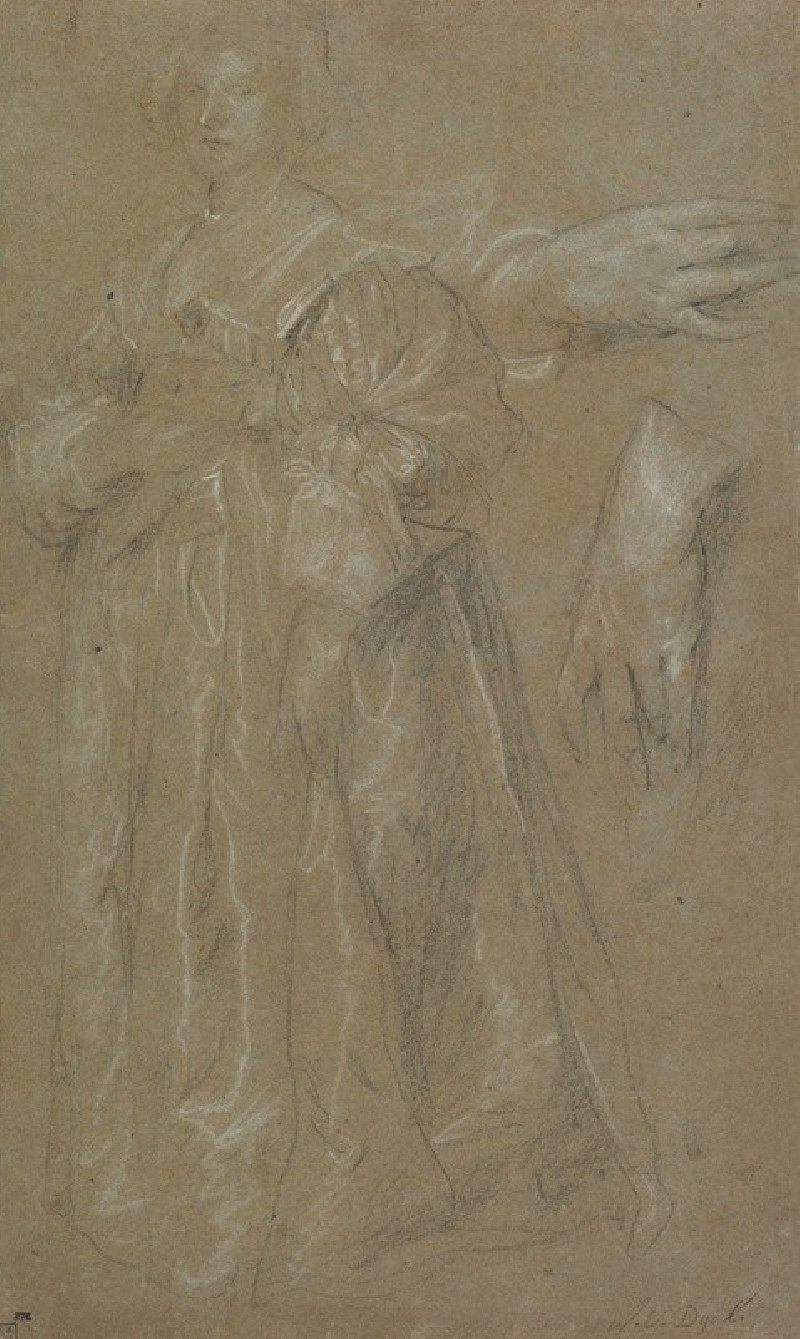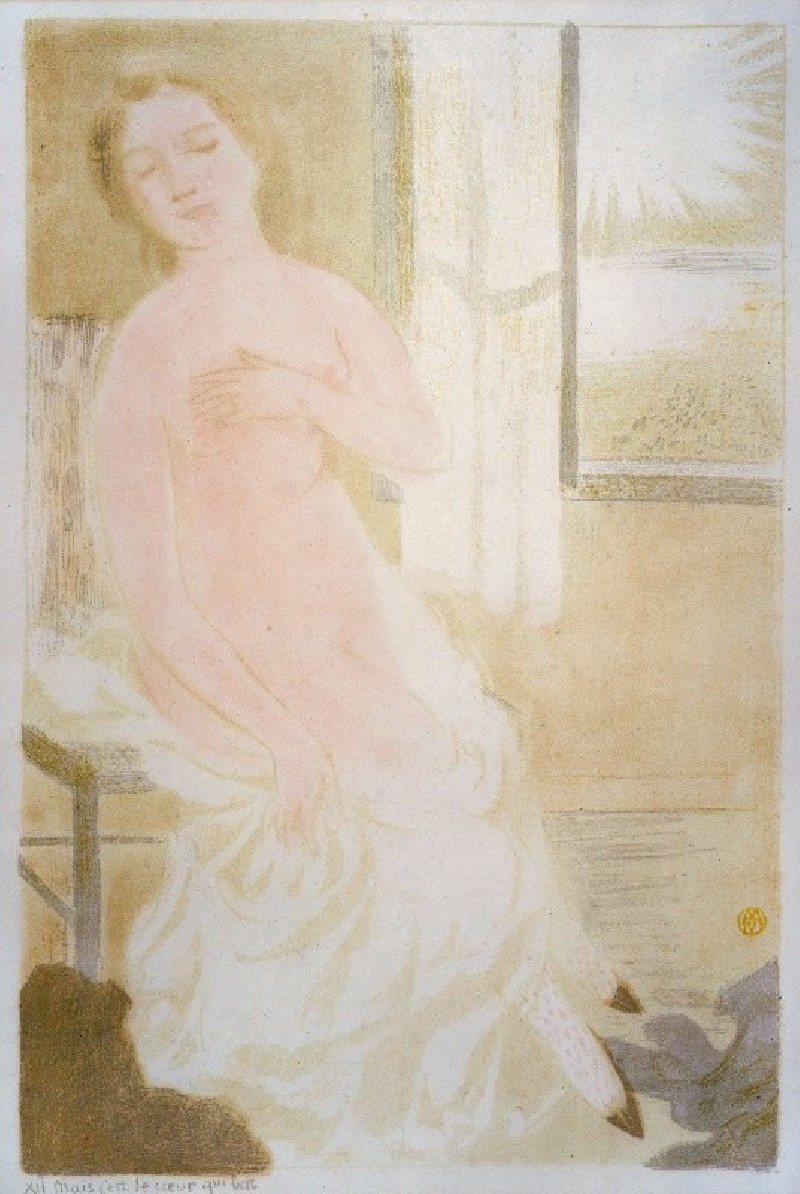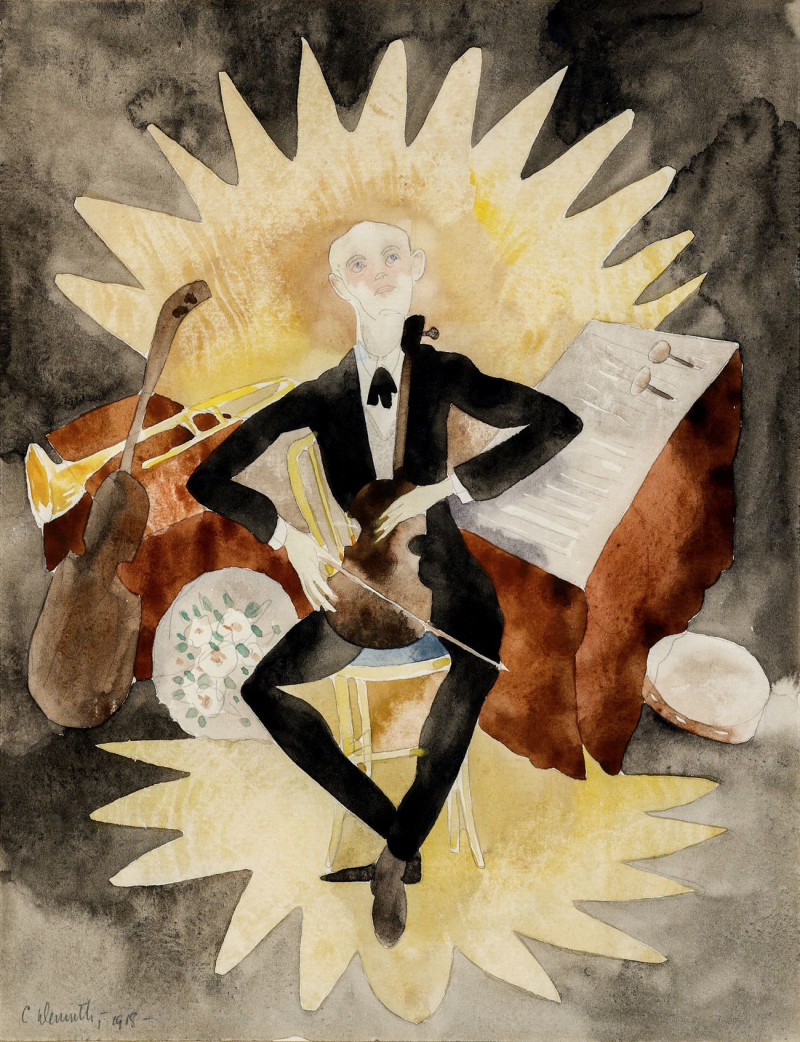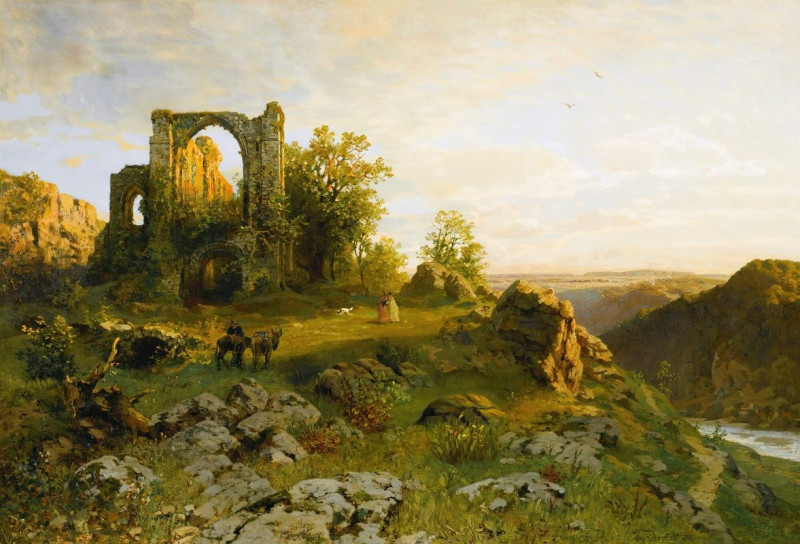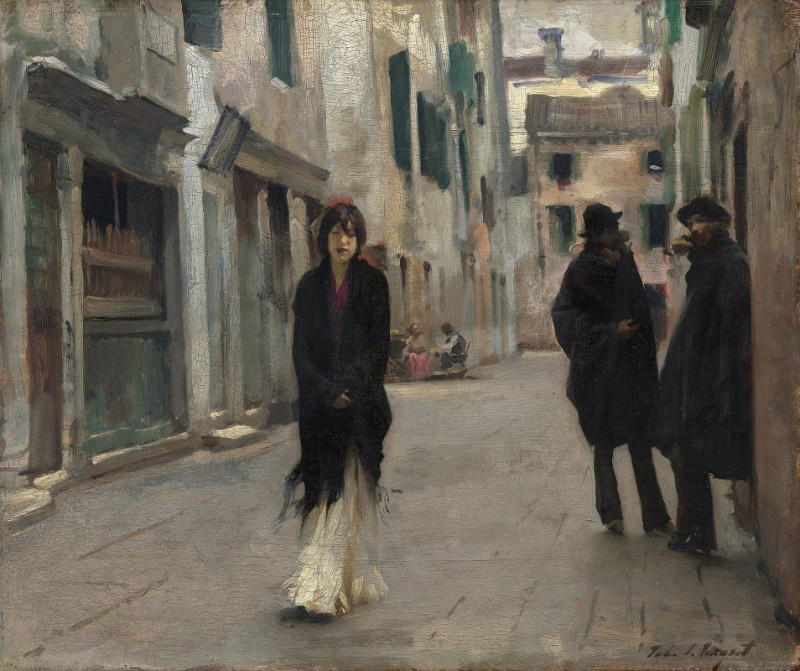Der Bock (1946)
Technique: Giclée quality print
Recommended by our customers
More about this artwork
Max Beckmann’s “Der Bock” (1946) displays the bold, expressive lines and enigmatic symbolism typical of Beckmann's work in the mid-20th century. This compelling lithograph features the figure of a man outfitted in a long coat and hood, holding aloft a small glowing object. Beside him, a prominently scaled and detailed goat stands on a small stool, adding an enigmatic yet central element to the composition.The background is minimal, subtly etched with abstract shapes and seemingly random objects that give little away but engage the viewer in seeking deeper meaning or connections. Beckmann's use of stark, straightforward black lines injects a dramatic intensity into the scene, capturing a moment that seems both everyday and mystical.“Der Bock” invites interpretation: the hooded figure and the goat could be seen as symbols—perhaps representing a clandestine power or a paganistic representation. The lithograph challenges viewers to ponder themes of visibility, power, and the surreal cohabitation of human and animal forms in one shared space.
Delivery
Returns
Actors, cabaret singers, heroes and thugs in a harsh postwar urban life by German artist Max Beckmann (1884-1950). His paintings show boldness, lust, and pain through delineated figures. The Nazi rule forced Beckmann to resign as an art professor and declared his artworks as degenerate. He later left for America where he lived in exile, yet remained active as an artist.

